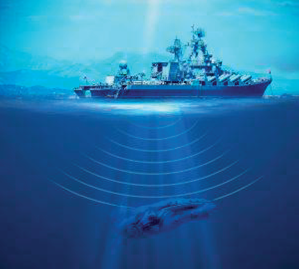El gran reto de la cavitación de las hélices en la Construcción Naval. Su control en continuo mediante el novedoso Sistema No-Intrusivo de Detección de Cavitación (Ni-CDS)
DOI:
https://doi.org/10.25043/19098642.239Palabras clave:
cavitación, monitoreo, eficiencia, URN, ruido, vibracionesResumen
La cavitación es un fenómeno no deseado que ha estado y está presente desde hace más de 50 años, en cualquier sistema de propulsión de los buques. A pesar de los grandes avances tecnológicos con el empleo de herramientas avanzadas de simulación (CFD´s), nuevas tecnologías y procesos de diseño y fabricación, aún estamos lejos de poder eliminarlo de las hélices debido a su propio principio de funcionamiento. El fenómeno de cavitación se va a seguir produciendo en determinadas condiciones de calados y operación del sistema propulsor de los buques.
Las consecuencias directas de este fenómeno son bien conocidas por las Armadas, armadores e ingenieros navales: reducción de la vida útil de la hélice y a veces también el timón y el casco, reducción de rendimiento propulsivo, un aumento significativo de las vibraciones y ruidos a bordo y, en consecuencia, disminución de las condiciones de confort y de la capacidad de sigilo, junto con una contaminación acústica con efectos negativos en los océanos y sobre la fauna marina. Esta problemática se encuentra en la mesa del IMO desde 2008, organismo internacional que actualmente está trabajando en la actualización de la MEPC.1/ Circ.833. A tal efecto, se ha creado un grupo de trabajo de más de 120 expertos, de 40 entidades (países y organizaciones) de todo el mundo, siendo TSI uno de sus miembros más involucrados.
Tras más de 5 años de investigación, que comenzó en el marco del Proyecto AQUO "Achieving Quiet Oceans”, financiado por el 7mo Programa Marco de la Unión Europea, TSI como PYME española ha desarrollado y lanzado al mercado el primer sistema no intrusivo capaz de detectar automáticamente y en continuo este fenómeno desde su inicio y cuantificar su intensidad, con suficiente precisión para proporcionar así una información muy valiosa para su control. Al tener un indicador visible y en tiempo real de este fenómeno, podemos actuar y reducir los efectos negativos de la cavitación y controlar la firma acústica de nuestro buque en todo momento.
Descargas
Citas
JOHAN BOSSCHERS. (2018). Propeller tip- vortex cavitation and its broadband noise. PhD thesis, Maritime Research Institute Netherlands.
J. M. ARROYO ROSA. (2018). Cavitación. Temarios formativos.
R AÚL MIGUEL SAN FRUTOS. (2016). Cavitación en hélices. https://conbdebarco.wordpress.com/
Escuela Técnica Superior de Ingenieros Navales. (2016). Propulsión del buque C8.- Cavitación.
Wikipedia, la enciclopedia libre (2017). Cavitación. https://es.wikipedia.org/wiki/Cavitación.
SANDRO IANNIELLO. ANDREA DI MASCIO. Hydroacoustic characterization of a marine propeller through the acoustic analogy.
SANDRO IANNIELLO. The underwater noise prediction from marine propellers: An essentially nonlinear problem.
SANDRO IANNIELLO. Sheet cavitation noise prediction from a marine propeller.
Entregables del proyecto europeo SILENTV Project.
Entregables del proyecto europeo AQUO Project.
Entregables del proyecto europeo SATURN Project.
PUBLIO BELTRÁN. et al. (2012). Achievement of the new URN requirements. ECUA
PUBLIO BELTRÁN. La Construcción Naval Española preparade para responder a los nuevos y exigentes requerimientos medioambientales. Nuevos retos y oportunidades.
PUBLIO BELTRÁN. (2008). Buque Oceanográfico Miguel Oliver: La excelencia en ruido y vibraciones a bordo cumpliendo ICES nº109

Descargas
Publicado
Cómo citar
Evento
Sección
Licencia
Derechos de autor 2023 Cotecmar

Esta obra está bajo una licencia internacional Creative Commons Atribución 4.0.
The authors who publish in this Journal certify that:
- The work submitted for publication in The Ship Science and Technology journal, was written by the author, given that its content is the product of his/her direct intellectual contribution.
- All data and references to material already published are duly identified with their respective credits and are included in the bibliographic notes and quotations highlighted as such.
- All materials submitted for publication are completely free of copyrights; consequently, the author accepts responsibility for any lawsuit or claim related with Intellectual Property Rights thereof, Exonerating of responsibility to The Science and Technology for the Development of Naval, Maritime, and Riverine Industry Corporation, COTECMAR.
- In the event that the article is chosen for publication by The Ship Science and Technology journal, the author state that he/she totally transfers reproduction rights of such to The Science and Technology for the Development of Naval, Maritime, and Riverine Industry Corporation, COTECMAR.
- The authors retain the copyright and transfer to COTECMAR the right of publication and reproduction of the work which will be simultaneously subject to the Creative Commons Attribution License (CC - BY), which allows the license to copy, distribute, display and represent the work and to make derivative works as long as it recognizes and cites the work in the manner specified by the author or licensor.
- For more information about the Creative Commons Attribution License (CC -BY) and his use and scope, please visit the following web page https://creativecommons.org/licenses/by-sa/4.0/legalcode








